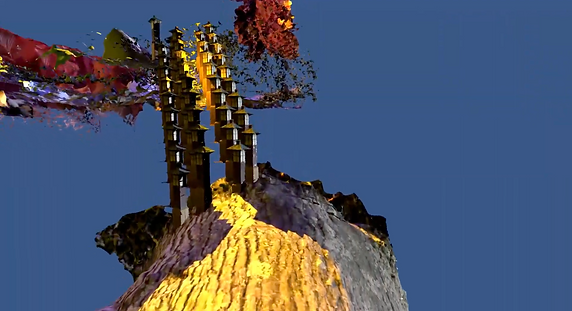


Developing an immersive 3D environment for my thesis, blending storytelling and world-building. The project features a microworld inspired by mushrooms, mycelium, and slime mold, where players explore an intricately designed forest to uncover narrative clues. Utilizing 3D scanning, texture painting, and projection mapping to create a visually captivating and interactive experience.
I used LiDAR on my phone to 3D scan natural elements, capturing detailed textures and shapes. After scanning, I cleaned up the raw data in MeshLab, refining the models to enhance their quality and usability. The cleaned models were then imported into Blender, where I arranged them into an immersive scene. Using Blender's tools, I created both still compositions and a preview video featuring a fly-through animation, allowing for a dynamic exploration of the digital environment.



Unity

I imported the 3D world into Unity to make it interactive and explorable. By adding a first-person controller, I allowed users to navigate the environment freely, enhancing immersion. To bring the world to life, I included ambient sound effects that complement the atmosphere, creating an engaging sensory experience. The result is an explorable digital space that combines visual storytelling with interactive elements, inviting users to uncover the hidden narrative within the world.


Modelled Environment




Projection Mapping


To enhance the immersive experience of my project, I used projection mapping with MadMapper to display the Unity-created game onto stacked apple boxes. The irregular shapes and textures of the boxes added a layer of distortion to the projected visuals, aligning with the world’s surreal and otherworldly atmosphere. This approach not only amplified the sense of disorientation but also made the installation feel more tangible, allowing the audience to interact with the environment in a unique and engaging way.